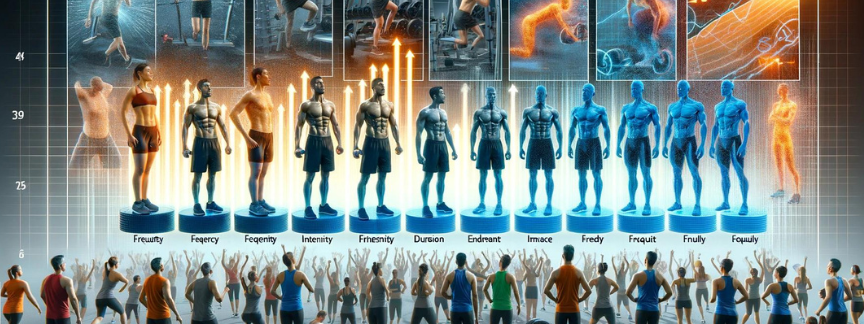
Chapter 1
Physical fitness & exercise
“Exercise is the key not only to physical health but to peace of mind.”
– Nelson Mandela



Exercise is universally beneficial, combatting obesity, certain cancers, diabetes, and heart disease among other chronic conditions.
Remember, engaging in any form of exercise is better than none at all.






The FITT acronym helps you vary your exercise routine to prevent plateaus and keep your workouts engaging:
- Frequency: How often you exercise.
- Intensity: How hard you push yourself.
- Time: The duration of your workouts.
- Type: The kind of exercise you do (e.g., running, walking).






Exercising with proper intensity, duration, and frequency leads to the Training Effect.
You’ll see changes in weight, body fat, endurance, and strength.
When your body adapts to these workouts, tweak your routine by changing the FITT factors (frequency, intensity, time, type) to keep improving.






If your progress stalls—like not seeing improvement from walking three times a week for 20 minutes—consider these adjustments:
- Frequency: Walk an additional day.
- Intensity: Incorporate jogging bursts, speed walking, or hill climbs.
- Time: Extend workouts by 10 to 15 minutes.
- Type: Switch to another activity, such as cycling, swimming, or aerobics.
Changing one or more variables every four to six weeks can maintain and enhance the training effect.






The Overload Principle is key for muscle growth and strength gains.
It states that the body needs to be pushed beyond its normal stress levels.
For example, if you typically run one kilometer, increase your distance to push your endurance further.






Feel free to share with your colleagues
Give feedback, ask questions or request new resources


